If the infant is able sit and maintain the trunk erect when provided with some manual support around the pelvis, but balance is still poor, they will usually be able to maintain their balance when sitting with a firm foam block (about 10cm high) on either side to provide support to the pelvis and thighs.
Setting up the environment
Let the infant sit with the back to a waist high vertical surface, and between two foam blocks about 10 cm high on either side. Initially the foam blocks can be placed in contact with the thighs.
The advantage of this set up is that the infant can use lateral arm support with the elbow extended while maintaining the trunk erect.
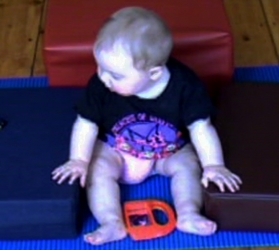
The support at the back protects the infant from falling all the way backwards when she loses her balance. This is especially useful if the infant does not yet hold the head up when falling backwards.
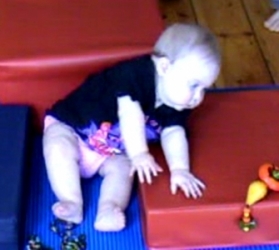
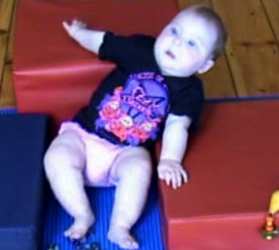
The raised level of the lateral support surfaces helps the infant to push up on the arms to regain the upright position when balance is destabilized laterally.
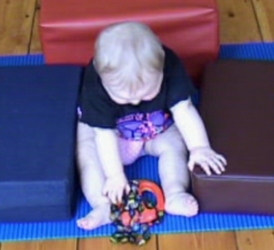
If the infant reaches too far to the side and loses balance she is usually able to use forearm support to stop himself falling to the the side and with time will learn to push up on the arm to regain an erect sitting posture.

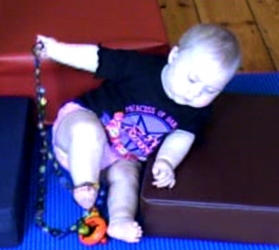
Practice maintaining erect sitting
Start by practicing maintaining erect sitting with arm support, for increasing lengths of time. One of the best ways to do this is to engage in social interaction: talk to the infant with an animated expression – make interesting sounds such as lip smacking, blowing raspberries and copying any sounds the infant makes.
Peek-a-boo is another game that holds an infant's attention.
Reaching for toys
The next step is to encourage the infant to reach for a toy. Place an interesting toy within easy reach of one hand to the side or in front of the infant.
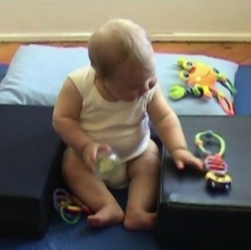
Progress to presenting toys further away or higher, to encourage the infant to make use of balance responses to reach the toy.
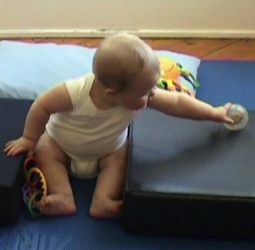
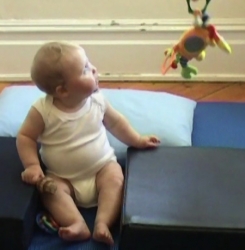
Shaking a rattle is a also good way to challenges the balance. at this stage in the development of sitting vigorous shaking involves movement of the arms, head and trunk.

When reaching up or lifting two toys the trunk tends to extend and the COM is raised and displaced forwards, which requires a new set of responses to maintain balance.
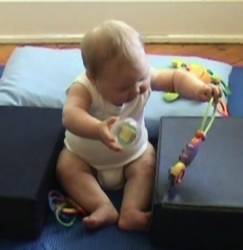
Looking behind is also very challenging when sitting when balance is still somewhat precatious. Notice that Roan is able to support her head in a degree of flexion as she falls backwards.
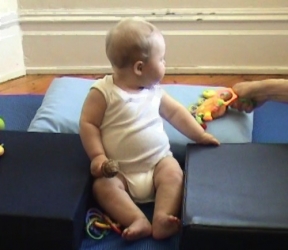
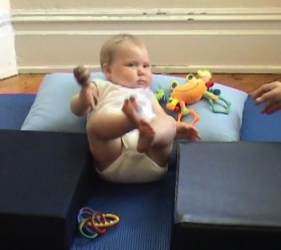
Roan, 9 months, sitting between blocks
At 9m Roan is able to sit erect without support, but her balance is still precarious and she easily topples over. Pelvic support provided by foam blocks allow her to reach for toys and come erect again, as well as recover from falls.
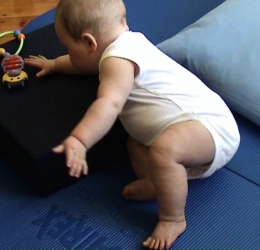

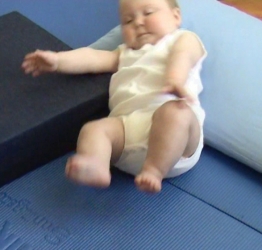
In this clip you also see how Roan manages to right herself by using a combination of trunk balance responses and arm support on a block when she loses balance and tips over to the side.

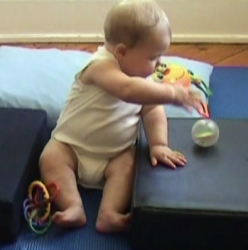
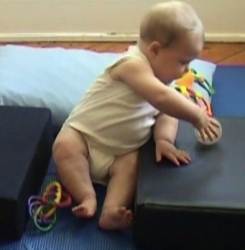
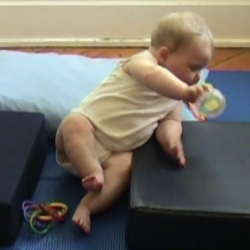
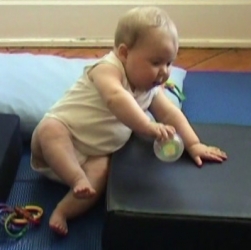
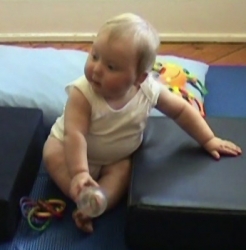
Video Roan sitting between blocks
Decreasing the amount of external support
Once the infant is able to reach to the side, forwards and across the body with firm support around the pelvis, the blocks can be moved a a few cm to the side so the the pelvis is no longer stabilized.
The raised surfaces provided by the blocks continue to provide an easy to access to a support surface as the infant reaches for toys.
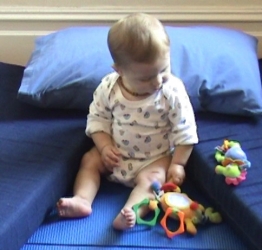
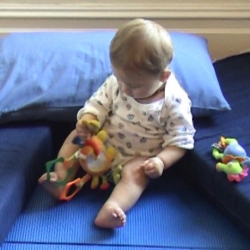
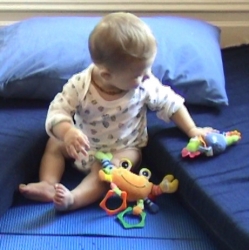
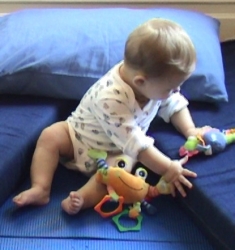
Will sitting with some lateral support
For subscribers
Guidelines for assessing 8-12 month infant with motor developmental delay